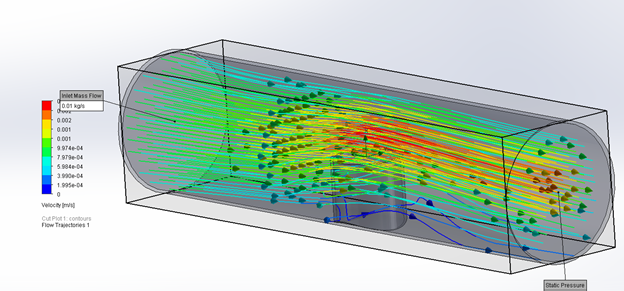

Metabolites diffusing around an alga create a spatial gradient of nutrients, and the region where the algal-derived organic nutrients are abundant is termed the phycosphere. The predominant mechanism that explains how heterotrophic bacteria respond to algal-derived organic matter is the diffusive transport of metabolites. Indeed, microscale interactions between algae and bacteria are commonly observed as direct cell-to-cell attachment or bacterial chemotaxis towards local gradients of algal exudates, with ongoing efforts to visualize these processes via micro or nano-scale chemical imaging. Maintaining physical proximity can significantly enhance the exchange rate of metabolites between microorganisms, which is especially important under an open-ocean environment where the nutrients are scarce and marine aggregates can contribute to the majority of nutrient cycling. These studies indicate that the community-level bacterial response to algal hosts depends at least partially on physical proximity, including physical attachment, as well as the type of algal-excreted products. In particular, it has been revealed that the algal-associated bacterial community can be highly conserved across time, uniquely shaped by their algal host, and exhibits structural differences between algal-attached and free-living. Due to the potential influence of the algal microbiome on algal physiology, much effort has been made to identify algal-associated bacterial community structure and understand how it is related to algal diversity. Heterotrophic bacteria consume up to 50% of the carbon fixed by algae, and this mineralization process often leads to an exchange of metabolites from bacteria to algae, providing a variety of micronutrients such as trace metals, vitamins, and phytohormones, which can be scarce in nature yet are essential for algal growth.

Metabolic interactions between microalgae and their associated bacteria, the latter sometimes referred to as the algal microbiome, have been recognized as an important contribution to carbon cycling in natural and engineered algal-dominated ecosystems. Our novel system presents a useful tool to investigate universal metabolic interactions between microbes in aquatic ecosystems.

These experimental findings coupled with a mathematical model suggest that host proximity and algal culture growth phase impact bacterial community development in a taxon-specific manner through organic and inorganic nutrient availability. We also demonstrate that algal-associated bacteria, both single isolates and complex communities, responded to inorganic nutrients away from their host as well as organic nutrients originating from the algae in a spatially predictable manner. In the microplate, we found that the diatom Phaeodactylum tricornutum accumulated to cell abundances ~20 fold higher than under normal batch conditions due to constant replenishment of nutrients through the porous structure. Here we introduce a copolymer-based porous microplate to co-culture algae and bacteria, where metabolites are constantly exchanged between the microorganisms while maintaining physical separation. Their metabolic interactions with the surrounding microbial community (the algal microbiome) play critical roles in carbon cycling, but due to methodological limitations, it has been challenging to examine how community development is influenced by spatial proximity to their algal host. Photosynthetic microalgae are responsible for 50% of the global atmospheric CO 2 fixation into organic matter and hold potential as a renewable bioenergy source.


 0 kommentar(er)
0 kommentar(er)
